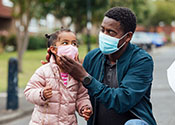
Researchers surveyed 6,654 childcare professionals in the spring of 2020 and 2021 and found that child masking was associated with a 13% lower risk of childcare program closures in 2021. Conversely, the study found that 6-ft social distancing measures had no relation to closures. This suggests that masking may be important for enabling safe, in-person education in early childhood settings.
- Research
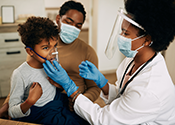
Researchers studied 915 children and teenagers from July to August 2021 who were hospitalized and tested positive for COVID-19. Of those, three quarters were hospitalized for complications resulting from COVID-19. About half needed help breathing, and nearly a third were placed in intensive care. Hospitalization rates were 10 times higher among unvaccinated adolescents compared with fully vaccinated adolescents.
- Research
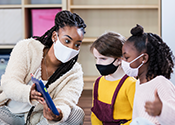
This study of seven California school districts identifies several themes and practices that aided their pandemic response. As the pandemic wore on, districts’ initial efforts expanded to address student and staff mental health, student engagement in online learning, adjustments of grading and graduation policies, and targeted services for students with high needs. Districts described proactive and consistent communication, efforts to build close ties with their local communities, and relationships within the district office and with County Offices of Education as among those that were particularly helpful.
- Research
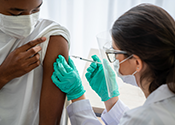
While there is no definitive answer yet, a growing number of studies suggest that getting a COVID vaccine can reduce — though not eliminate — the risk of longer-term symptoms. While the evidence is not yet conclusive, it is clear that vaccines offer protection against infections and hospitalizations, which in turn decreases the chances of getting long COVID.
- Research
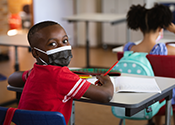
According to a study of COVID incidence in Boston-area schools before and after a statewide mask mandate was lifted, schools that maintained masking post-mandate had significantly lower rates of COVID, leading students and staff to miss fewer school days. The study’s findings underscore the value of continuing masking policies even when mandates are rescinded.
- Research
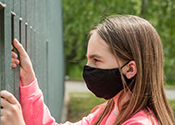
While there are relatively few studies about long COVID in children, research suggests that younger people are developing long COVID in significant numbers. The UK Office for National Statistics estimates that 44,000 children ages 2–11 in the country have long COVID, as do 73,000 12–16-year-olds. However, research on long COVID in children is lacking. Studies on adults have found that the impacts of long COVID can be significant: between one-fifth and one-third of those with long COVID remain ill at least 12 weeks after a diagnosis of COVID-19, and a significant number continue to experience symptoms many months later.
- Research
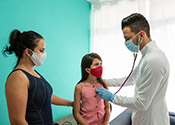
This meta-analysis of long COVID in children and adolescents, in Scientific Reports, estimates that up to 25% of children previously infected by COVID have some long COVID symptoms. The most common symptoms are mood symptoms (16.5%) like anxiety, depression, and anger; fatigue (9.7%); and sleep disorders (8.4%). The study also provides a breakdown of symptoms by body system and frequency.
- Research

This study, which analyzed data of 2,293 children who were hospitalized due to COVID-19 from March 2020 to May 2021, found that nearly a third of hospitalized children had severe COVID-19 and 0.5% died during hospitalization. Risk factors associated with severe COVID-19 include chronic lung disease and obesity.
- Research
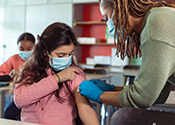
This article describes a school-based COVID vaccine initiative in 2021–22 that corresponded with vaccination rates of Seattle Public School students increasing from 57% to 80%. The community health outreach strategies that were employed in partnership with school health programs can be instructive to other school and public health personnel seeking to increase vaccine uptake among public school students.
- Research
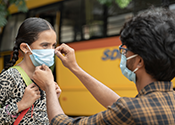
A study conducted from late July to mid December 2021 found that school districts with universal masking were less likely to experience COVID-19 spreading in their schools when compared to school districts with optional masking. After accounting for school size, masked schools saw up to 87% less transmission.
- Research

In a national survey, an overwhelming majority of school counselors said their students are showing more signs of anxiety and depression than before the pandemic and increasingly experiencing challenges like trouble regulating their emotions and difficulty focusing on classwork or solving interpersonal conflicts. While the most recent federal budget nearly doubled previous funds for social and emotional learning, mental health, and student support, counselors say more resources are urgently needed in order to reach all students.
- Research
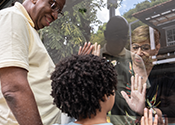
Most COVID-19 deaths occur among adults; however, a tragic consequence of adult deaths is the loss of parents and other adult caregivers among children. This study, which examines data from April 1, 2020, through June 30, 2021, offers state-specific findings, disaggregated by race and ethnicity, for COVID-2019–associated orphanhood. It found that more than 140,000 children in the United States experienced the death of a parent or grandparent caregiver. The risk of such loss was 1.1 to 4.5 times higher among children of racial and ethnic minority groups compared with non-Hispanic white children.
- Research
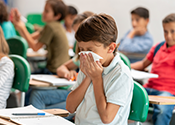
This study, conducted in Italy, found that students accounted for a high proportion of “infected individuals who caused onward transmission,” suggesting that efforts to control the spread of COVID should target school settings.
- Research
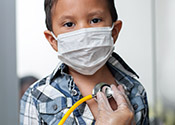
This article describes findings from a study, published in The Lancet Child and Adolescent Health journal, which is one of the first of its kind to include infants and toddlers. The study, of children ages 0-14 in Denmark, found that children previously infected with COVID were more likely than children in a control group to show a range of symptoms including fatigue, memory and concentration problems, mood swings, rashes, and stomach aches for 2 months or more following infection with the virus.
- Research

This FAQ states that individuals who have been infected with COVID-19 should still sign up for the vaccine, as re-infection is possible. It also makes clear that the vaccine cannot make individuals sick or alter their DNA.
- Research
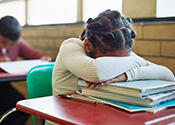
This article describes a National Academies of Sciences report that finds federal and state COVID recovery efforts have not allocated sufficient support for students who have lost family members to COVID. The report explains how bereaved students—disproportionately racial and ethnic minorities—would benefit from extended medical and social support services to counter the “negative developmental cascade” that can be brought on by grief.
- Research

Data released in March 2022 by the U.S. Centers for Disease Control and Prevention illustrate the proliferation of mental health challenges among U.S. high school students since the COVID-19 pandemic began. In particular, 44% of surveyed youth said they felt persistently sad or hopeless during the past year. One factor found to protect students against negative outcomes is school connectedness—“a sense of being cared for, supported, and belonging at school”—but less than half of the surveyed students said they felt connected to their school community during the pandemic.
- Research

This journal article finds that a quarter of U.S. parents who responded to a survey on COVID public health measures reported nonadherence to efforts designed to protect against COVID transmission—for example, breaking quarantine or misrepresenting COVID status. Common reasons for nonadherence include wanting to exercise personal freedom, wanting to maintain normalcy for their child, and not being able to stay home from work or other responsibilities.
- Research
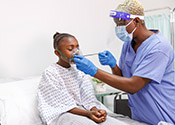
This study follows a cohort of nearly 2,000 children from eight countries, including the United States, who received positive COVID tests in emergency rooms to determine what proportion of those children have long COVID symptoms 90 days after infection. It reveals that approximately 10% of children who ended up admitted to the hospital and 5% of children who were discharged from the emergency room after their diagnosis showed long COVID symptoms 3 months out.
- Research

This article lists eight strategies identified by a national survey of school counselors to help students recalibrate after the pandemic, including hiring more counseling staff, restarting group activities, and teaching social and emotional skills and therapy tools.
- Research
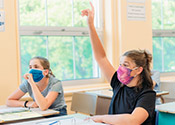
This article describes a nationwide tendency in k–12 schools toward using low-cost ventilation measures to reduce the spread of COVID-19, like opening doors and windows and holding classes outside. Less than half of districts in a nationwide survey indicated they have engaged or continue to engage in higher-cost, higher-quality efforts to improve indoor air filtration, like upgrading school HVAC systems (38.5%) and/or using portable High Efficiency Particulate Air filtration systems in classrooms (28.5%). The article provides a list of funding streams available for districts that wish to upgrade their indoor air filtration.
- Research

This study of “test-to-stay” policies in universally masked k–12 settings found that such policies resulted in 82% of school days saved, greatly reducing the number of missed school days.
- Research